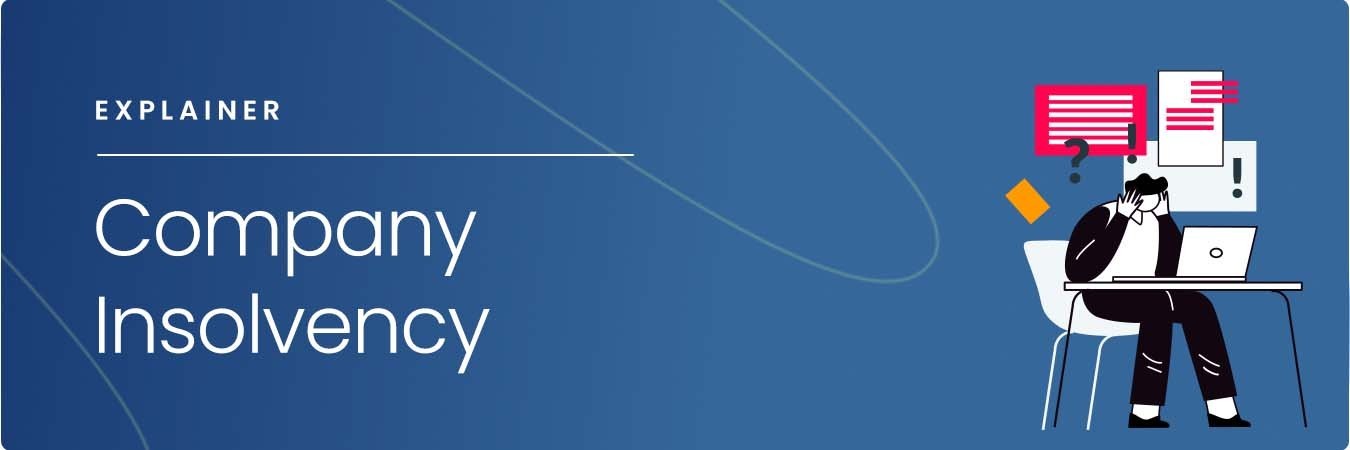The Definitive Guide to Insolvency Practitioner
The Definitive Guide to Insolvency Practitioner
Blog Article
The Main Principles Of Insolvency Practitioner
Table of ContentsThe Basic Principles Of Insolvency Practitioner Our Insolvency Practitioner DiariesUnknown Facts About Insolvency PractitionerInsolvency Practitioner for BeginnersThe Greatest Guide To Insolvency PractitionerThe Main Principles Of Insolvency Practitioner An Unbiased View of Insolvency Practitioner
Insurance coverage is checked and managed by state insurance policy divisions, and among their key goals is securing insurance holders from the risk of a company in economic distress. When a firm gets in a duration of economic problem and is unable to satisfy its responsibilities, the insurance coverage commissioner in the company's home state initiates a processdictated by the regulations of the statewhereby efforts are made to aid the business regain its economic footing.If it is determined that the firm can not be fixed up, the company is stated bankrupt, and the commissioner will certainly ask the state court to order the liquidation of the firm. The insurance commissioner, either assigned by the governor or chosen, heads the state insurance coverage division and displays and manages insurance coverage task within the state.

[Back] By acquiring control of a company, the commissioner (or the insurance division) is, by regulation, the rehabilitator or liquidator of the business. In this capability, the commissioner or department takes control of the firm's operations. As opposed to do so directly, the commissioner may keep an unique deputy receiver to supervise the company's activities.
The Best Guide To Insolvency Practitioner
The receiver manages a bookkeeping of the firm's properties and responsibilities and administers the estate of the firm. In doing so, the receiver seeks to take full advantage of the company's properties, move them to cash money, and then disperse that money to creditors having valid cases against the insurance firm according to payment priorities specified by state regulation (in all states, insurance holders are top priority complaintants whose claims are paid before those of basic financial institutions).
All insurer (with restricted exemptions) licensed to offer life or wellness insurance or annuities in a state must be participants of that state's guaranty association. The warranty association complies with the commissioner and the receiver in pre-liquidation preparation. As soon as the liquidation is bought, the warranty association offers insurance coverage to the business's policyholders who are state citizens (approximately the levels defined by state lawssee below; any kind of advantage amounts above the warranty asociation advantage degrees come to be cases against the business's continuing to be properties).
The above insurance coverage levels apply independently for each and every insolvent insurer. [Back] When an insurance company falls short and there is a shortage of funds required to satisfy the obligations to policyholders, state guaranty associations are triggered. Guaranty organizations have two major sources of funding when giving coverage to insurance policy holders. Guaranty associations have subrogation rights to a proportionate share of the properties remaining in the stopped working insurance company.
Examine This Report about Insolvency Practitioner
Second, insurers doing service in that state are assessed a share of the quantity called for to satisfy the portion of the guaranty organizations' covered insurance claims not or else funded with estate possessions. The quantity insurance providers are analyzed is based on the amount of costs that they collect in that state. [Back] The National Company of Life and Medical Insurance Guaranty Organizations (NOLHGA) is composed of the life and health insurance policy warranty associations of all 50 states and the District of Columbia.
NOLHGA develops a job pressure of depictive warranty associations to deal with the insurance policy commissioner to develop a plan to protect insurance holders. To find out more on NOLHGA's role in the procedure, see "What Is NOLHGA?" and "The Safeguard at Job." [Back]
You are here: Insolvency is when a company or individual can not pay financial obligations when they are due. There are several options readily available to an insolvent firm or individual: ASIC controls companies, it does not manage individual bankruptcy procedures. For more details concerning insolvency and personal insolvency arrangements, see the Australian Financial Protection Authority web site.
8 Simple Techniques For Insolvency Practitioner
Anticipating security by helping you select the right consumers and the best markets to stay clear of uncollectable loan to begin with, many thanks to intense monetary evaluation (Insolvency Practitioner). In-depth market knowledge, giving you with 360-degree exposure on organization industries and approaching troubles. It would be a simplification to believe a profession credit score insurance begins and finishes with costs and pay-outs
This can happen for a number of factors, consisting of poor monetary administration, unanticipated costs, or a modification in the marketplace. If a company is financially troubled, it might be compelled to close down or market off possessions to pay creditors. This can have a major effect on the company, employees, and shareholders.
Our Insolvency Practitioner Ideas
It can result in work losses, asset sales, and even bankruptcy. It is essential to recognize exactly how business insolvency works and just how it can influence your service. Why does a business become part of bankruptcy? There are a variety of reasons a company might get in into insolvency. One of the most typical reason is that the firm is incapable to pay its financial obligations as they fall due.

The Ultimate Guide To Insolvency Practitioner
The firm may be forced to market possessions, lay off team or also close down. Creditors might be left out of pocket and the business's shareholders may see their investment disappear.
This can take place for a variety of reasons, including poor financial monitoring, unanticipated costs, or a change on the market. If a firm is insolvent, it may be compelled to shut down or liquidate possessions to pay lenders. This can have a major influence on business, employees, and shareholders.
The Best Guide To Insolvency Practitioner
Why does a firm get in right into bankruptcy? There are a number of reasons why a company might enter right into bankruptcy.
Various other reasons for bankruptcy include fraud, mismanagement, and unanticipated expenses. Insolvency can additionally lead to task losses and the closure of companies.
This can have severe ramifications for the firm, its stakeholders, creditors and the economy. The business may be compelled to offer assets, lay off team and even shut down. More Help This can have a knock-on result on the regional community and the economic climate as a whole. Lenders might be excluded Full Article of pocket and the company's shareholders might see their investment disappear.
Report this page